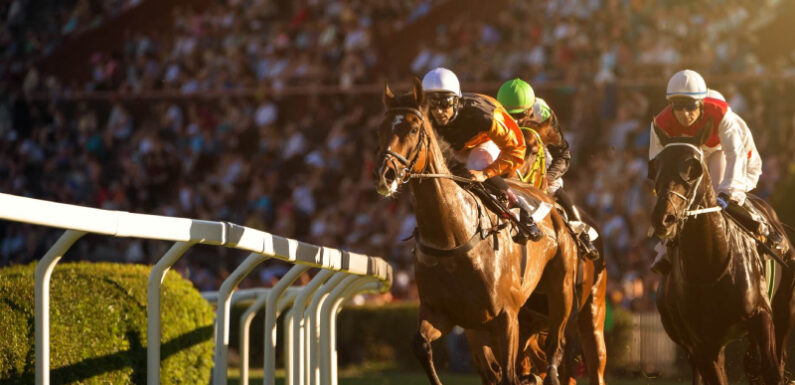
Horse racing and its different variations
Horse Racing is one of the most significant spectator-attended sporting events in the world. The origin of horse racing dates back to 4500 BC, with the event establishing its timestamp in almost all the principal civilizations. Horse racing in modern times is also well received, with the game synonymously attached to all major world-sporting extravaganzas popular today. Though the popularity of the sports event is attributed to the presence of well-groomed horses, a significant part of the fame is contributed by the presence of overwhelming glitz, glam, and money associated with the betting involved in the races. The extent of the economic significance has compelled many countries to make gambling in horse racing, a legal activity.
Nevertheless, horse racing is a popular event, with many countries hosting a plethora of grand contests in which hundreds of thoroughbred horses race against one another to become the most coveted horses of the year. Here is an overview of the different types of horse races famous across the countries and the significant events conducted.
Different types of horse races
Horse races vary immensely from countries to countries with the formats involving the participation of particular breeds of horses, to the racetracks covering different distances. Races that are conducted on different track surfaces and in different gaits make the horse racing events vivid and exciting. From US’s Triple crown races to Dubai world cup, every sporting event varies from each other, with few emphasizing on the horse’s speed and with some others involving the specific skills or endurance as the major testing factors. A few races also compete based on horse types or horse grades. Horse racing handicapping is yet another evaluation event that involves a handicapper assigning weights for the handicap race, in which past performances of the horses are taken into account. Here is a complete list of the vast varieties of horse racing events conducted worldwide.
Significant classifications of horse racing events
Flat racing
Flat racing is typically a race that includes thoroughbred horses contesting on flat-leveled surfaces. These races are primarily based on the speed and stamina of the contesting horses. Flat races are held for a distance of 1 to 3miles on a turf surface or a dirt track. Race is classified into two types as condition racing and handicap racing. In a condition race, the elements that determine the factors are age, sex, or any other condition. In contrast, in a handicap race, the handicap is assigned by making the horses carry weights that are at more considerable advantages. Handicappers decide the handicaps based on the horses’ pace, speed, form, pedigree, or the jockey.
Triple crown races and Breeder’s Cup races are the famous flat races.
Jump horse races
Jump racing or national hunt is a horse race held with obstacles kept along the racecourse. The horses in this race would try to avoid the obstacles like fences, ditches, or any other hurdles to win the race. Jump races are the test of horses’ hurdling capacity as well as the jockey’s ability to control their horses. Jump racing is classified into two types, namely, hurdles and steeplechases. While in a hurdle race, the horses may have to jump through numerous hurdles; in a steeplechase, the horse must have to avoid obstacles such as fences, ditches, or water.
Cheltenham Gold Cup, Aintree Grand National, King George VI Chase, and Hennessey Gold cup are few famous jump racing events conducted across the globe.
Endurance Racing
Endurance races test the horse’s endurance on a racetrack, unlike the flat race or jump races. The horses are challenged to run on long tracks, some of them even extending a distance of 1000 kilometers. The betting is based on the endurance factor rather than the speed. Arabian breeds are the famous participants of these extended races due to their increased stamina and endurance level.
The endurance races are not a popular horsing race event, though few endurance races are conducted annually with Mongol Derby as one of those.
Harness racing
Harness racing requires horses to pull along sulky, a two-wheeled light vehicle with the jockey seated on it, at a specified pace. The horses should not deter from their trot or pace, which would otherwise lead to penalizing. Entry to this particular race is particularly expensive, and the prize money is above one million euros.
Quarter horse racing
This specific racing event emphasizes the need for high speed, as the race involves a short distance of about a quarter of a mile or even lesser. The competition is open for faster horses that can compete exceptionally well on shorter tracks. All American Futurity at Ruidoso Downs is quite popular for quarter racing.
Maiden races
Maiden races are the ones that consist of horses that are yet to win a race. The horse will remain maiden until they get their first win. Though the gains in the inaugural races do not give a competitive edge, the wins do provide the winners with a direction.
Stakes racing
Highest level of horse races, this horse racing event features excellent cash prizes. These races see massive participation from some of the best in the field, from best jockeys to the best horses. Stake events are considered as the stepping stones to more significant racing events. One of the biggest stake events is the Kentucky Derby.
Graded stakes racing is an advanced version of stakes racing events where races are graded into three levels that helps to detail horses according to their competitiveness in addition to the quality of the fields. The graded events are expensive events where winners are likely to be awarded great cash prizes apart from the recognized as the best.





